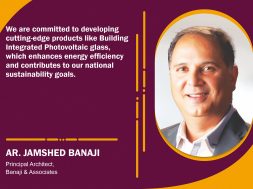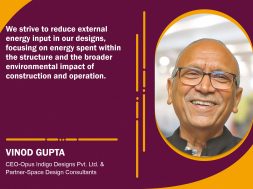Perspective on new era Facades

Climate facades are famous for their ability to increase the visual impact of buildings, reduce the direct solar energy transmitted into the interior and improve the acoustics of buildings located in noise polluted areas.
Burj Khalifa Podium Facade Designer
Future buildings will require architects to formulate iconic appearances, shapes, and facilities. The architect selects the latest trends, designs, & materials to give stunning effects based on the client’s preferences. In the next step, it is up to the Façade contractor’s Design team to finalise the overall design and execution. Facade requirements
and trends are phenomena in the modern world.

Energy efficient facades Technically enhanced conventional facades
To withstand the future expected global warming, engineers can challenge the existing energy-reduction concepts and investigate alternative construction methods, materials and façade configurations of buildings. There are different ways of limiting the solar overheating of a building’s interior and the heat transmission through the
glass and for example, limiting the glazed surface area of the building façade using high performance glass and tinted glass to reduce visual light transmission.
With the climate facades, a sacrificial pane of glass on the external skin acts as a barrier between the elements and the building, thus reducing solar radiation. Climate facades are famous for their ability to increase the visual impact of buildings, reduce the direct solar energy transmitted into the interior and improve the acoustics of buildings located in noise-polluted areas. In the past few years, an additional function has been added to the well-known aesthetic, waterproof and insulating facades functions, that is, the minimisation of energy consumption.
This is not exactly a new function but rather an extension of the previous one. Either through passive shading and ventilation, or complex dynamic systems, the need to control a building’s interior environment to reduce our reliance on air conditioning, heating systems or artificial lightning has led to the development of the facades of
the buildings made possible by technology.

Energy efficient facades Double skin ventilated facades
The European architectural trend of double-skin ventilated façades has become increasingly popular in recent years. Although the concept of Double skin facades is not new, there is a growing tendency for Architects and Engineers to use them. The trend is driven by the practical need for an improved indoor environment, the aesthetic desire for an all-glass façade that leads to increased transparency, the need for improving the acoustic in buildings located in noise-polluted areas, and the reduction of energy use during the occupation stage of construction.

Earth quake-resistant facades
Not only in the Asian continent but also in other parts of the world facing our life challenging Earth quakes at close intervals. A building’s structure constitutes its main load-bearing elements. Its bearing constitution directly received all seismic forces and reacted to them. The degree of the building’s survival over an earthquake depends on its reaction and it deals with such forces.
The problem of effectively reducing the seismic risk by constructing earthquake-resistant buildings is particularly complex since it is affected by significant parameters and many other factors. In line with the limitations mentioned above, maximum performance aimed developments are happening on facades capable of resisting the seismic
forces of major earthquakes without breakage of their glass panes and deformation or distortion of their structure. This capability should be characteristic of all glass curtain walls at any level and in any direction, of corner walls at any corner, edge, corner walls between buildings, as well as of curtain walls carrying unified glass panels from one floor to the other floor. In addition, the seismic resistance of the glass curtain wall should not affect its functional capacity or air- and water-tightness. It should not reduce its strength against wind pressure and other external forces after the termination of the earth’s tremor
25
Cookie Consent
We use cookies to personalize your experience. By continuing to visit this website you agree to our Terms & Conditions, Privacy Policy and Cookie Policy.









